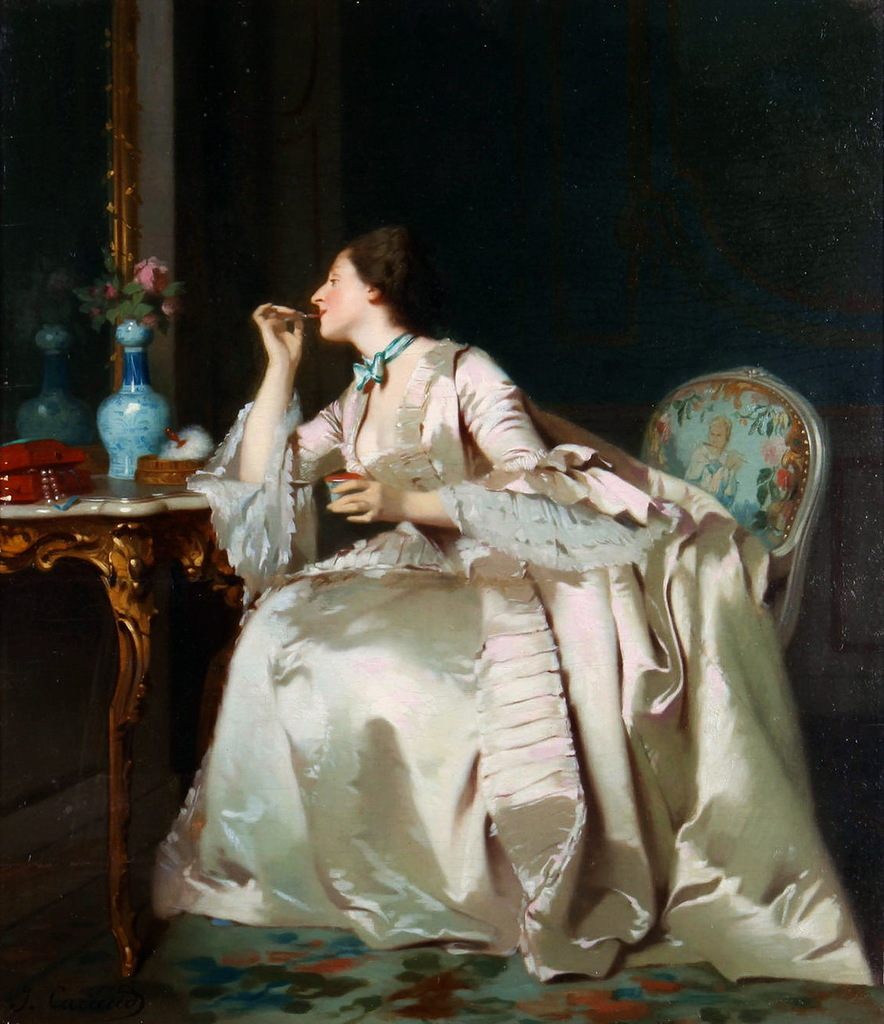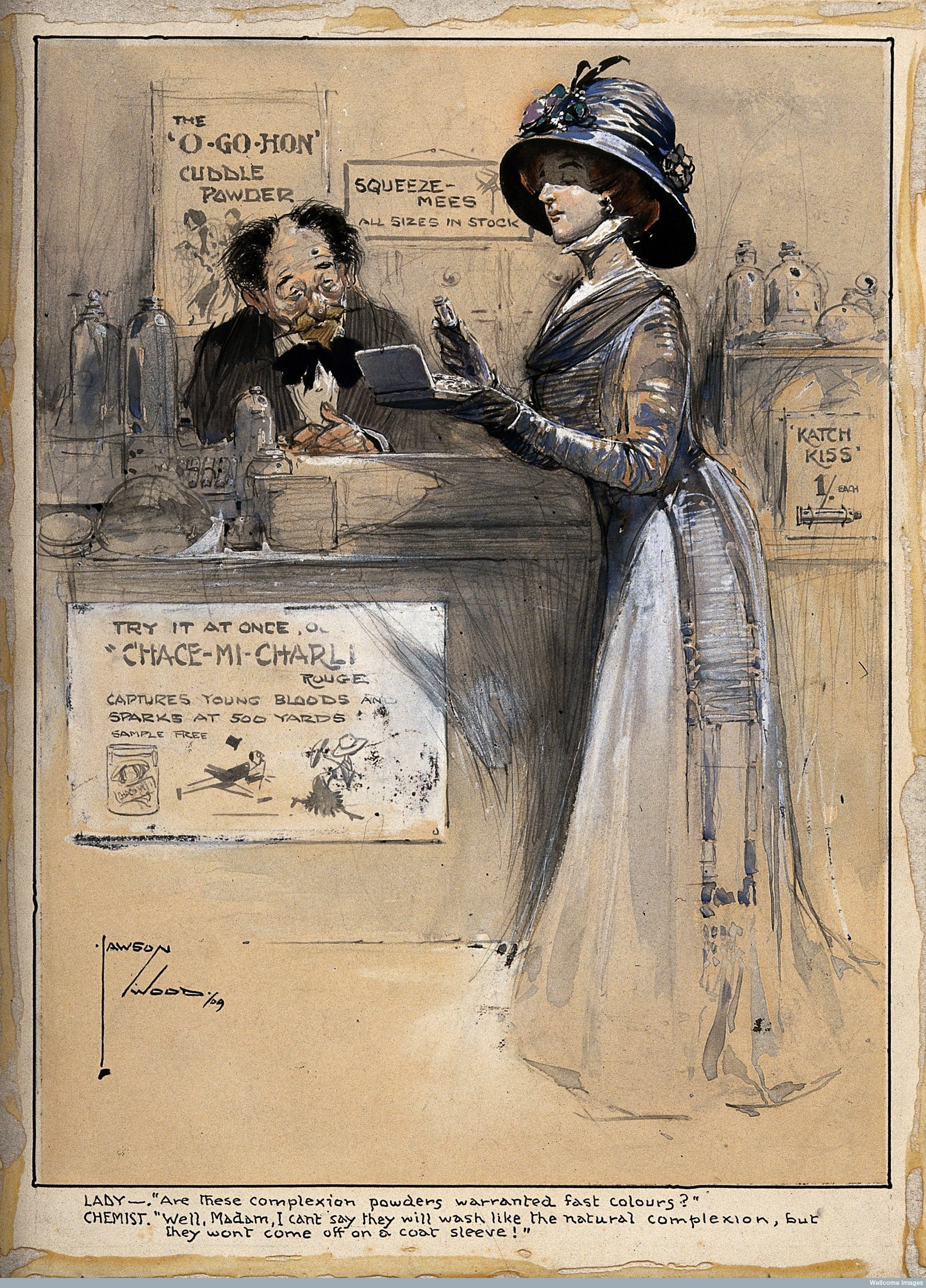Ella Spell
Well-Known Member
I agree. I love the Silver Screen actress look. ^^
Feeling isolated? You're not alone.
Join 20,000+ people who understand exactly how your day went. Whether you're newly diagnosed, self-identified, or supporting someone you love – this is a space where you don't have to explain yourself.
Join the Conversation → It's free, anonymous, and supportive.
As a member, you'll get:
You've found your people. Create your free account
I love the 1920s and 1950s makeup. I think they look the best and have natural qualities. I like to go for that look when special occasions occur. I hate the big lip trend that is going on right now along with the buccal fat removal. People are starting to look like ducks.
Not really.
Big hair, excessive makeup, tacky jewelry. Portrait from mid 1780s.

What is buccal fat removal?
I shudder to ask.
Good question. I got an article for you.
https://www.cnn.com/style/article/buccal-fat-removal-explainer-trnd/index.html
I don’t get why people do that just for a tend. It’s very unhealthy for you. Thank you for sharing.Buccal fat is fat between your cheekbones and jaw bones in your face. These fat pads help make up the shape of your face. Buccal fat removal is a surgery to remove the fat in this area of your face. This can highlight the bone structure in your face, especially your cheekbones and the hollowed-out areas between your cheeks and jawline. The procedure is also sometimes called a cheek reduction.
And expensive!I don’t get why people do that just for a tend. It’s very unhealthy for you. Thank you for sharing.
Buccal fat removal cost ranges from $500 to $20,000. The cost depends on factors like the surgeon's experience, location, anesthesia fees, and other procedures. It is usually not covered by insurance.
She's a maniac on the floor.Yes but they didn't have that "I'm a tiger ready pounce on you" look, like they were ready to star in Flashdance.

Yes!Ewww. That's not for me. I already have very accentuated cheekbones.
I'd rather get a bit of buccal fat, if anything.
Egyptian women used to put toxic drops in their eyes to make their pupil contract, they thought it made them more beautiful. This toxic concoction eventually led to their loss of sight.I don’t wear it, but I do find it interesting. Curious may be a better word. I find makeup to be curious, perhaps a bit confusing.
View attachment 111399
The Poisonous Beauty Advice Columns of Victorian England
BY NATALIE ZARRELLI DECEMBER 17, 2015

A woman applies lipstick in Joseph Caraud’s La Toilette, 1858. (Photo: Public Domain/The Athenaeum)
GLASS AND TIN BOTTLES HIDE snug in a case, waiting for a woman’s daily ritual. She reaches for a bottle of ammonia and washes it over her face, careful to replace the delicate glass stopper. Next, she dips her fingertips into the creams and powders of her toilet table, gravitating toward a bright white paint, filled with lead, which she delicately paints over her features. It’s important to avoid smiling; the paint will set, and any emotion will make it unattractively crack.
In Victorian England, these were some of the ways women began their daily beauty routines. Unfortunately, cosmetics of the era were plagued by caustic chemicals that could also cause bodily addiction. And, similar to today, the advice on how, if, and when to use these treatments came from the era’s most popular beauty columns.
One such column, from Harper’s Bazaar, was called “The Ugly Girl Papers: Or, Hints for the Toilet.” It was written by a Mrs. S.D. Powers, a beauty expert of the time, and became so popular that it was re-published in 1874 as an anthology. The “Ugly Girl Papers” has the tone of a wise aunt with endless advice on how to solve your beauty woes.
In one chapter Powers asks, “Is there such a being as a hopelessly homely woman?” It is a rhetorical question, and readers of the time would have known the author’s firm belief that one could go from average to “charming” with just a few dress and makeup adjustments. Powers prized subtlety in makeup, though, and always included careful reminders to be sparse with powder and rouge.
According to Powers, women’s beauty was an elaborate, skilled, and semi-secret performance. “Everybody knows they are inventions, and accepts them as such, like paste brilliants at a theatre,” she wrote.

A woman queries the durability of cosmetics at a pharmacy. (Photo: Wellcome Images, London)
Victorian beauty ideals were unsurprisingly obsessed with pallor: upper class white women chased even whiter skin, a symbol that their privilege never left them working in the sun. “It was all about how to make your skin more translucent,” says Alexis Karl, a perfumer and lecturer who has researched Victorian cosmetics extensively.
There were two dominant makeup styles in the 1800s: “natural” and “painted.” The ideals of “natural” skin care conjured images of the “English Rose”; a wholesomely beautiful woman with good morals, but Karl notes “it was understood that there was a lot of artifice going on.” The “painted” beauty regime was seen as a bit risqué; these women were not hiding their artifice nor their desire to be beautiful.
Similar to the “no-makeup makeup” trend that exists today, the natural look was often achieved through unnatural preparations, many of them homemade. Modern beauty practices belie the roots of current ideals: a chemical called Taraxacum is suggested as a sort of 1800s chemical peel by Powers, who says “the compress acts like a mild but imperceptible blister, and leaves a new skin, soft as an infant’s.”
To keep the face fresh, she advises coating the face with opium overnight, followed by a brisk wash of ammonia in the morning. For the woman with sparse eyebrows and eyelashes, mercury was often recommended as a nightly eye treatment, eradicating the need to use heavy makeup. “The look of the consumptive was very desirable: the woman with the watery eyes and pale skin, which of course was from the cadaver in the throes of death,” says Karl.
To get this near-death look, women would squeeze a few drops citrus juice or perfume into their eyes, or reach for some belladonna drops, which lasted longer, but also caused blindness. Pale skin was encouraged with veils, gloves and parasols, but could also be bought: Sears & Roebuck sold a popular product called Dr. Rose’s Arsenic Complexion Wafers, which were just that–little white chalk wafers filled with arsenic for delicate nibbling. They were specifically advertised as “perfectly harmless.”
Arsenic, a natural metalloid found in the earth’s crust, is an extremely toxic compound that can be tolerated for a time when eaten in small amounts (and has occasionally been used in medicine). Long-term exposure, however, is extremely unpleasant: nervous system and kidney damage, hair loss, conjunctivitis and growths called arsenical keratoses plague the body along with, yes, vitiligo, which causes pigment loss in the skin. Arsenic, which became addictive as a person’s tolerance built, was used in as many forms as possible.
Lola Montez, a Victorian actress and traveling beauty writer, wrote in her book The Arts of Beautyabout how women in Bohemia (now a part of the Czech Republic) regularly bathed in arsenic springs, “which gave their skins a transparent whiteness.” She also warned of the price: “once they habituate themselves to the practice, they are obliged to keep it up the rest of their days, or death would speedily follow.”
Continued here…
https://www.atlasobscura.com/articles/the-poisonous-beauty-advice-columns-of-victorian-england
I only wear make up for occasions where I have to heavily mask my autism. It’s an actual physical mask for me and makes me feel better when I have to socialise. Other than that, No can’t be bothered with it.I only like to wear makeup for special occasions. I don’t like to wear it everyday because I’m to lazy to apply it to my face. I would rather look at makeup on other people. I find it fascinating to see what peoples styles are. Here’s a photo I found in the archives of myself wearing makeup.
I was a sophomore in high school and I had to do dance as physical education. I had to attend dance concerts after school and I would have to wear makeup. I always like to go natural and not cake it on my face. In the photo, my mom did my makeup for the concert.
View attachment 111394